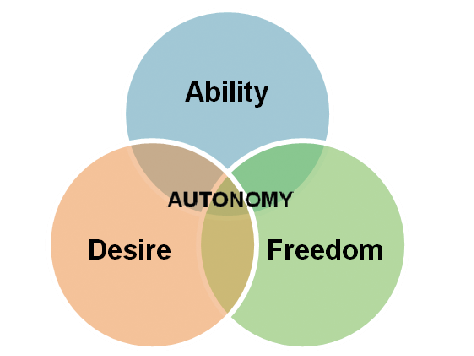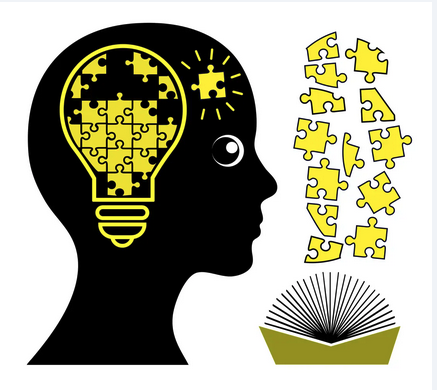Introduction
Welcome to the future of education with SmartLearn, an innovative Autonomous Learning Management System designed to revolutionize how we approach personal and professional development. In this era of information overload, SmartLearn emerges as a beacon of tailored, efficient, and engaging learning. Imagine a learning system which takes responsibility for your learning journey and ensures to achieve all your learning goals with your minimum basic cooperation!
This blog post delves into the groundbreaking features of SmartLearn, a system that leverages cutting-edge AI to offer customized learning experiences. Whether you are a student aiming to supplement your academic journey, a professional seeking to upgrade your skills, or a curious mind eager to explore new knowledge territories, SmartLearn promises to be your ideal learning companion. Join us as we explore how SmartLearn is setting new benchmarks in the world of e-learning, making education more accessible, personalized, and impactful than ever before.
Following are some key features of this Autonomous Learning Management System that takes responsibility for a user’s learning journey and helps them achieve their set goals with minimal active effort. This system actively guides and supports users on their learning journey, increasing their chances of achieving their goals with minimal effort. The key is to find the right balance between automation and user control, making the system a valuable partner in the learning process.
Table of Contents
Features
Adaptive Learning and Content Curation
- Smart Goal Setting: Facilitate goal setting with pre-designed templates, personalized recommendations based on learning styles and interests, and automatic adjustment based on progress.
- AI-powered Content Curation: Recommend learning materials (courses, articles, videos) tailored to the user’s specific goals, learning pace, and knowledge gaps.
- Dynamic Learning Paths: Continuously adjust the learning path based on performance, engagement, and mastery of concepts. Use techniques like spaced repetition and micro-learning to optimize knowledge retention.
- Adaptive Difficulty: Adjust the difficulty of content and exercises based on the user’s performance, preventing frustration and maintaining engagement.
Motivational and Engagement Features
- Micro-challenges and Gamification: Break down goals into bite-sized challenges with gamified elements like points, badges, and leaderboards to keep users motivated.
- Personalized nudges and reminders: Provide timely reminders, progress updates, and encouraging messages to keep users on track.
- Social learning and community: Connect users with peers with similar goals for group study, discussions, and feedback.
- Integrations and Rewards: Partner with other platforms and services to offer real-world rewards or benefits for achieving learning milestones.
Proactive Guidance and Support
- Virtual Coaches and Mentors: Implement AI-powered virtual coaches or connect users with human mentors who can provide guidance, answer questions, and offer personalized feedback.
- Performance insights and analytics: Provide users with clear and actionable insights into their progress, strengths, and areas for improvement.
- Adaptive Study Schedules: Recommend ideal study times and durations based on the user’s learning style, preferences, and schedule.
- Progress Tracking and Visualization: Show users their progress in a clear and engaging way, using visuals like progress bars, timelines, and achievement badges.
Minimizing User Effort
- Seamless Integration: Integrate with existing learning platforms, tools, and calendars to minimize additional effort for users.
- Offline Learning: Allow downloading of content and offline access for seamless learning on the go.
- Multi-device Optimization: Ensure a smooth and consistent learning experience across different devices (desktop, mobile, tablet).
- Voice-activated learning: Implement voice commands for hands-free control of the learning experience.
Autonomous Learning Management System – Fictional Case:

Let’s imagine a user named Maya, an aspiring data scientist, wants to learn Python programming. She sets a goal in the system to become proficient in Python within 3 months. Here’s how the system can help her achieve it:
Adaptive Learning and Content Curation:
- Smart Goal Setting: Maya chooses a pre-designed template for “Learning Python for Data Science,” which automatically suggests achievable milestones and adjusts based on her progress.
- AI-powered Content Curation: The system recommends beginner-friendly Python tutorials, interactive coding exercises, and data science case studies aligned with Maya’s goal.
- Dynamic Learning Paths: After completing basic syntax lessons, the system detects Maya’s understanding and suggests advanced topics like data structures and libraries relevant to her data science aspirations.
- Adaptive Difficulty: When Maya struggles with a particular concept, the system offers additional resources and practice problems with increasing difficulty as she masters them.
Motivational and Engagement Features
- Micro-challenges and Gamification: Maya earns points for completing daily coding challenges and unlocks badges as she progresses, keeping her motivated and engaged.
- Personalized nudges and reminders: The system sends friendly reminders when Maya misses a study session or suggests relevant articles based on her recent learning activities.
- Social learning and community: Maya connects with other Python learners in the system’s forum to share tips, discuss challenges, and participate in group coding projects.
- Integrations and Rewards: Upon completing specific milestones, Maya earns discounts on data science courses or tools, adding real-world value to her learning journey.
Proactive Guidance and Support
- Virtual Coaches and Mentors: Maya has access to an AI-powered virtual coach named “Pythia” who answers her coding questions, suggests learning resources, and provides encouraging feedback.
- Performance insights and analytics: The system generates personalized reports showing Maya her strengths and weaknesses in specific Python concepts, allowing her to focus on areas needing improvement.
- Adaptive Study Schedules: Based on Maya’s learning style and preferences, the system recommends optimal study times and durations, helping her stay on track without overloading her schedule.
- Progress Tracking and Visualization: Maya sees her progress visualized through a colorful learning path map, showcasing her completed milestones and remaining challenges, boosting her sense of accomplishment.
Minimizing User Effort
- Seamless Integration: Maya’s progress syncs across her desktop and mobile app, allowing her to learn on the go without losing track.
- Offline Learning: She can download coding exercises and tutorials for offline study during commutes or when internet access is limited.
- Multi-device Optimization: The system offers a consistent and intuitive interface across all devices, ensuring a smooth learning experience regardless of the platform.
- Voice-activated learning: Maya can use voice commands to navigate the system, search for resources, and run code snippets, further reducing manual effort.
Autonomous Learning Management System Design
Following are the key modules to be built this Autonomous Learning System:
- User Onboarding and Goal Setting:
- Registration and profile creation
- Goal setting and learning path customization
- Learning style assessment
- Content Management System (CMS):
- Content ingestion and organization
- Metadata tagging and categorization
- Content quality control and curation
- Adaptive Learning Engine:
- User assessment and knowledge modeling
- Content recommendation and sequencing
- Difficulty adjustment and scaffolding
- Learning path optimization
- User Interface (UI):
- Learning content presentation
- Interactive exercises and activities
- Progress tracking and visualizations
- Feedback and guidance mechanisms
- Gamification elements
- Virtual Coach or Mentor:
- Natural language processing (NLP) for understanding user queries
- AI-powered responses and guidance
- Personalized feedback and motivation
- Social Learning Features:
- Discussion forums and community spaces
- Collaborative learning activities
- Peer feedback and support
- Reporting and Analytics:
- User performance dashboards
- Learning analytics and insights
- Goal attainment tracking
- Integrations and Compatibility:
- Integration with existing learning platforms (e.g., LMS)
- Compatibility with different devices and browsers
- Offline learning capabilities
- Administrative and Security Modules:
- User account management
- Content moderation and approval
- Data security and privacy protection
- System configuration and maintenance
- Third-Party API Integrations:
- Gamification platforms
- Reward systems
- External content providers
- Communication tools
Conclusion
In conclusion, SmartLearn stands as a testament to the power and potential of an Autonomous Learning Management System in reshaping the educational landscape. By harnessing the capabilities of AI and machine learning, SmartLearn offers a level of personalization and adaptability that traditional learning environments struggle to match. This blog post has highlighted how SmartLearn is not just facilitating learning but revolutionizing it, making it more accessible, engaging, and aligned with individual needs and goals.
As we step into a future where education is increasingly intertwined with technology, systems like SmartLearn are leading the charge, offering a glimpse into a world where learning is truly autonomous, boundless, and tailored to every learner’s journey. Embrace the future of education with SmartLearn, a partner in the pursuit of knowledge and success in this rapidly evolving world.
Please answer this question in comment section below: Which of the above Autonomous Learning Management System features might work best in your opinion?
References & Further Study
- “Adaptive Learning Management Systems: A Review” by A.C. Graesser and X. Yang: This academic paper published in the Educational Technology & Society journal offers a comprehensive examination of ALMS, covering their architecture, key functionalities, benefits and challenges, and future directions. ers
- “Designing an Autonomous Learning Management System for Personalized Learning Journeys” by A. Kumar, et al.: This conference paper presented at the International Conference on Advances in Computing, Communications and Informatics details the design and implementation of an ALMS focused on personalized learning paths and learner autonomy. 94
- “Unlocking Potential: The Rise of Autonomous Learning Management Systems” by EdSurge: This article from the education news platform EdSurge delves into the practical applications of ALMS in educational settings, showcasing real-world examples and discussing the impact on teachers and students. sk
Don’t miss out on the future of learning! Subscribe to our blog and stay ahead with the latest insights on Comprehensive & Integrated Learning Systems. Join our community now and transform your educational journey with cutting-edge updates right in your inbox. Subscribe today!

